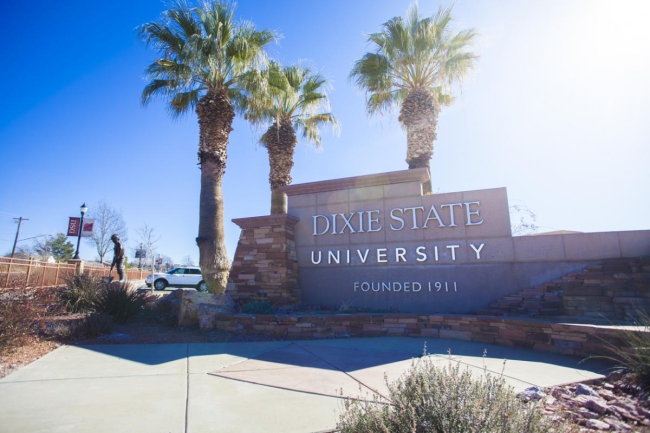You have /5 articles left.
Sign up for a free account or log in.

ISTOCK.COM/LPETTET
When colleges began considering what to do for the fall semester, as the COVID-19 pandemic raged on, decisions were relatively easy to make for some.
Community colleges, for the most part, don't rely on residence hall revenue, which helped tip the financial scales toward staying online across the sector. Highly selective institutions can be relatively confident students will still enroll if they go online, given their brand power. Selective or elite institutions planning to open up campuses tend have the funds to test students and take other safety precautions.
But for regional public colleges and universities, which serve roughly 40 percent of all undergraduates, the decision to reopen or stay remote includes many moving parts.
Most of the member institutions of the American Association of State Colleges and Universities, which serves regional institutions, have reported that they plan to return to in-person instruction or use a hybrid model this fall, according to Luis Maldonado, vice president for government relations and policy analysis at the association. Davidson College has been tracking fall decisions with its College Crisis Initiative, and its data show that more than half of the public institutions that responded are planning to be fully in person, primarily in person or a hybrid of in person and online.
"But there’s so many different questions as to whether they’ll be able to remain in person, depending on what happens with the pandemic and what happens once the community convenes," Maldonado said. "This is new territory for our membership."
One of the largest considerations is finance. Most regional colleges have yet to fully recover financially from the last Great Recession. Now they face innumerable financial difficulties.
Will student enrollment levels increase or decrease if courses stay remote? How bad will state budget cuts be? Will students need more financial aid? How much was lost from closing down in the spring? How much will reopening campuses cost?
"We’ve been working with some of our colleagues in D.C., and we estimated it will cost higher education in the United States about $74 billion in new costs to reopen campuses safely," Maldonado said, adding that "regional comprehensive institutions are typically located in areas and regions of the country where there are less resources to help adjust to crises. That will have a real impact on institutions."
Regional institutions also tend to serve more vulnerable students, such as those who are low income or students of color. And fully remote learning can exacerbate inequities in higher education, Maldonado said.
"Not every campus and not every student has the infrastructure to move their entire academic experience online," he said.
Planning the Return
Administrators at Dixie State University in St. George, Utah, are relying on the state to make the hard decisions.
The state and county commissioners have created four tiers for reopening. For Dixie State, the green tier means normal operation, yellow means practicing social distancing and wearing masks, orange means limiting the ability to come to campus and red means closing down campus completely.
The college's area is currently in the yellow tier, which it expects to continue into the fall, said Michael Lacourse, Dixie State's provost.
The plan for fall is to offer different accommodations for students. Courses that need to be in person, like arts and nursing, will include modifications. Most other courses will use a hybrid model, where half the students come to campus two days per week, and switch with the other half of students on the other days. The courses will be streamed live, which is how the students at home will attend.
Students can choose to remain fully online, no questions asked, Lacourse said. And faculty can request to teach fully online for health reasons.
About 15 percent of Dixie students already took fully online course loads, Lacourse said.
Safety measures the university is taking include requiring masks, giving face shields to faculty members and spacing out seating. Students will be assigned seats in classrooms so the university can do contact tracing if someone contracts the virus.
About 75 percent of students at Dixie State said in surveys conducted at the end of the semester and in May that they wanted to have a traditional experience in the fall, Lacourse said, and they would not return to college if that wasn't the case.
"We heard them," he said. "We tried to create enough flexibility in the system to accommodate both" the 75 percent of students who wanted to return and the 25 percent who didn't.
Utah also had relatively few cases at the start of the pandemic, particularly in the St. George region. Since these decisions were made, Lacourse said, the state has seen an uptick in cases.
"We’re living in a bit of a bubble," he said. "Going into the fall, if that bubble were to change in some way, we would act quickly."
Middle Tennessee State University is in a similar position to Dixie State. About 40 percent of its courses will be offered on campus, said Mark Byrnes, the university's provost, about half of which will be hybrid courses.
"We knew from the spring that we just have some courses that are not well suited for online," Byrnes said. "We knew if there was an opportunity to be in person in the fall, we wanted to take it."
Anecdotal and social media surveys of what students wanted also pointed away from fully online learning, he said.
But the university has also been discussing what would happen if it needs to again send everyone home midsemester.
"It would definitely be a big deal, both in terms of the classes that we have scheduled to be on ground, and it also would certainly have a financial impact," he said. "On the other hand, it won’t be as big of a shock as it was in March."
The university would follow any state or local orders to shut down campus. It also plans to work with public health officials to determine whether to roll back operations, using metrics like hospital capacity, on-campus isolation room capacity, absentee rates and comparisons of campus case counts to regional case counts.
For Framingham State University, using a hybrid model to keep a face-to-face component for about 30 percent of courses will help its finances from an enrollment and tuition standpoint. But that still doesn't outweigh the costs to the Massachusetts institution of various safety measures, said Dan Magazu, a spokesman for the university.
Framingham State will test some students, such as those living on campus. It will also be setting up Plexiglas dividers at service centers and require people to wear face masks inside.
"We heard from many students who felt strongly they wanted some semblance of a traditional experience this fall. We feel this is the safest way to do that," Magazu said. "To meet our mission as best as possible, we need to have some on-campus experiences. We reserve the right to change direction at any time."
‘Just So Depressing’
Some higher education researchers aren't confident that returning to campus in the fall will pan out.
Having to send students home again midsemester is the worst-case scenario, said Robert Kelchen, associate professor of higher education at Seton Hall University.
"They made their big investments on in-person experiences," he said, adding that it's likely at least some colleges will have to shut down campuses during the fall term. "This is going to ebb and flow across the country at different points."
It's a no-win situation, Kelchen said. Leaders can choose to open up campus to help their revenue, but that may get thrown out the window if they need to move to remote again. But if they don't open up campus, they could lose enrollment to the institutions that do.
"It’s just so depressing right now that there are no good options," he said. "My instinct would be to have limited in-person classes for students who need it the most and move as much as possible online."
Beyond finances and safety, some colleges are also facing political pressures to reopen.
Most statehouses around the country are controlled by Republicans, who are more likely to push for reopening, said Cecilia Orphan, assistant professor of higher education at the University of Denver. While college leaders could "step up and take more heat" on the issue, she said, there could likely be financial ramifications as states look to cut budgets in the pandemic-fueled recession.
"That said, it doesn’t mean that they shouldn’t," she said.
In North Carolina, the Republican Legislature is pushing for reopening more of the state, including colleges, said Andrew Koricich, assistant professor of higher education at Appalachian State University.
"It’s easy for people to discount how the politics external from institutions are weighing on these decisions as well," he said. "These are the people that decide on your funding. There is a tightrope you have to walk."
The final consideration is the morality of the issue. If students or faculty die from COVID-19 after a campus opens, the potential impact on the institution is hard to predict, Kelchen said. But such a tragedy likely will tarnish a college's reputation and make students reticent to enroll.
Orphan predicts students will return to campuses for a few weeks, then go home shortly after cases explode. For regional publics, the disruption will disproportionately impact students of color and lower-income students, she said, furthering inequities.
Finances also are more concrete. Leaders can easily project financial impacts for different scenarios, but it's much harder to predict the impacts of a new virus that's already disrupted daily life across the globe.
"I think we see a lot of that happening -- leaders are thinking about, what do we need to do to financially survive?" Orphan said.
In an email sent after a phone interview, Orphan further pursued this idea.
"Most of the cost/benefit analyses campus leaders are running do not fully consider the potential loss of human life. This raises an important moral dilemma that campuses are not fully grappling with (and that I didn’t fully grapple with until you asked me, to be honest)," she wrote. "When fear causes our vision to narrow on survival, we spend less time considering the moral implications and human impacts of our decisions and focus instead on immediate-term survival. This is a mistake that can cost human lives during a pandemic and one I think many campuses are guilty of. I don’t think this is a uniquely regional public problem, I think it’s widespread across higher education."
She added that, "Human life has far more value than institutional survival, and the ripple effects of returning in person in the fall and potentially accelerating the spread of the virus must outweigh financial and political concerns tied to survival. In short, campuses should privilege their students', faculty, staff and administrator well-being over their fiscal well-being."




